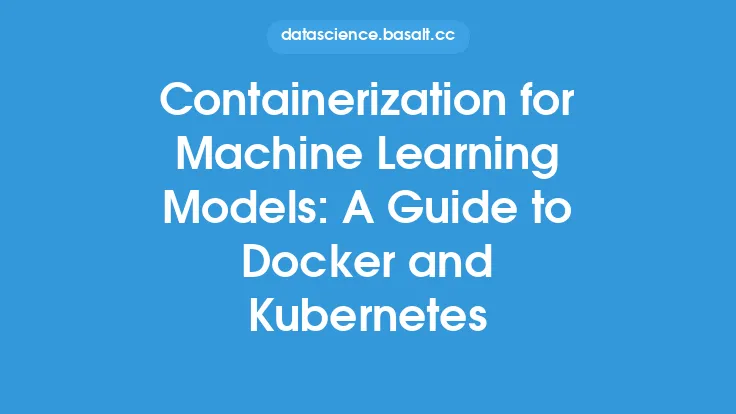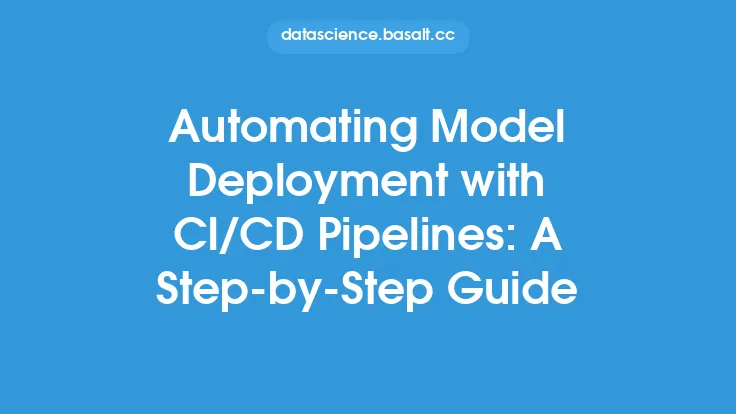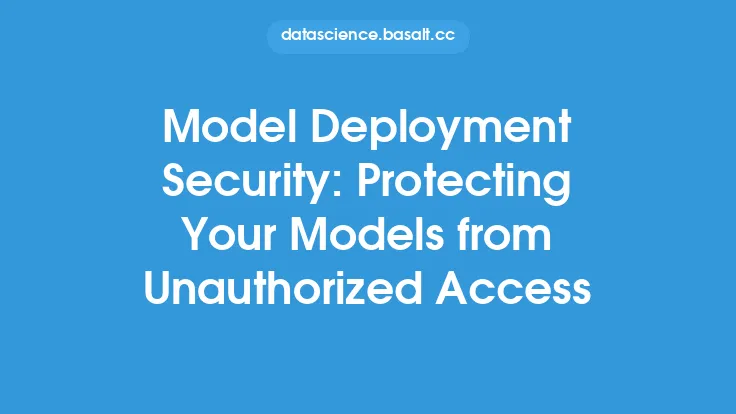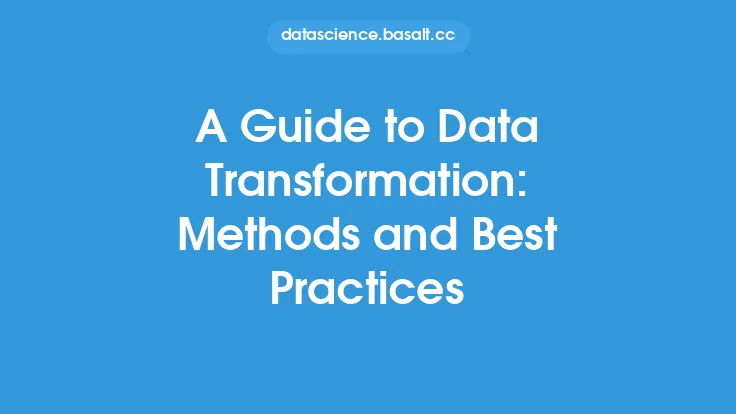When it comes to machine learning, the development of a model is only half the battle. The other half, and arguably the more challenging part, is deploying the model into production. This is where model deployment best practices come into play, ensuring that the transition from development to production is smooth, efficient, and reliable. In this article, we will delve into the key considerations and strategies for successful model deployment, focusing on the evergreen aspects that remain relevant regardless of the specific tools or technologies used.
Understanding the Challenges of Model Deployment
Model deployment is a complex process that involves taking a trained model and integrating it into a larger system, where it can be used to make predictions or take actions. This process can be fraught with challenges, including ensuring that the model is scalable, secure, and reliable. Additionally, the model must be able to handle a wide range of inputs and edge cases, and it must be able to adapt to changing data distributions and patterns. Furthermore, the deployment process must be repeatable and automated, to ensure that the model can be easily updated or rolled back if needed.
Pre-Deployment Checklist
Before deploying a model, there are several key considerations that must be taken into account. First and foremost, the model must be thoroughly tested and validated, to ensure that it is performing as expected. This includes testing the model on a variety of datasets, including edge cases and outliers, to ensure that it is robust and reliable. Additionally, the model must be optimized for performance, to ensure that it can handle the expected volume of requests. This may involve optimizing the model's architecture, or using techniques such as pruning or quantization to reduce the model's size and computational requirements.
Model Serialization and Deserialization
Once the model has been tested and validated, it must be serialized, or saved to a file, so that it can be deployed to a production environment. This involves converting the model into a format that can be easily stored and transmitted, such as a binary file or a JSON object. The serialized model can then be deserialized, or loaded into memory, in the production environment, where it can be used to make predictions or take actions. There are several different formats that can be used for model serialization, including TensorFlow's SavedModel format, PyTorch's TorchScript format, and the ONNX format.
Deployment Environments
The deployment environment is a critical consideration in model deployment, as it can have a significant impact on the model's performance and reliability. There are several different deployment environments that can be used, including cloud platforms, containerization platforms, and serverless platforms. Cloud platforms, such as AWS, Azure, and Google Cloud, provide a scalable and secure environment for deploying models, and offer a range of tools and services for managing and monitoring the deployment process. Containerization platforms, such as Docker and Kubernetes, provide a flexible and portable way to deploy models, and allow for easy scaling and management of the deployment environment. Serverless platforms, such as AWS Lambda and Azure Functions, provide a cost-effective and scalable way to deploy models, and allow for easy integration with other cloud services.
Monitoring and Logging
Once the model has been deployed, it is essential to monitor its performance and log any errors or issues that may arise. This involves tracking key metrics, such as latency, throughput, and accuracy, and logging any errors or exceptions that may occur. There are several different tools and techniques that can be used for monitoring and logging, including metrics platforms, logging frameworks, and alerting systems. Metrics platforms, such as Prometheus and Grafana, provide a way to track and visualize key metrics, and allow for easy alerting and notification. Logging frameworks, such as Log4j and Logback, provide a way to log errors and exceptions, and allow for easy integration with other tools and services. Alerting systems, such as PagerDuty and Splunk, provide a way to notify teams and individuals of errors or issues, and allow for easy integration with other tools and services.
Model Updates and Rollbacks
Finally, it is essential to have a plan in place for updating and rolling back the model, in case changes are needed or issues arise. This involves versioning the model, so that different versions can be tracked and managed, and having a process in place for rolling back to a previous version if needed. There are several different tools and techniques that can be used for model versioning and rollbacks, including version control systems, model registries, and deployment scripts. Version control systems, such as Git and SVN, provide a way to track and manage different versions of the model, and allow for easy collaboration and integration with other tools and services. Model registries, such as MLflow and TensorFlow Model Garden, provide a way to manage and track different versions of the model, and allow for easy integration with other tools and services. Deployment scripts, such as Ansible and Terraform, provide a way to automate the deployment process, and allow for easy integration with other tools and services.
Conclusion
In conclusion, model deployment is a critical step in the machine learning workflow, and requires careful consideration and planning to ensure success. By following best practices, such as thorough testing and validation, model serialization and deserialization, and monitoring and logging, developers can ensure that their models are deployed smoothly and efficiently. Additionally, by having a plan in place for model updates and rollbacks, developers can ensure that their models remain reliable and accurate over time. By focusing on the evergreen aspects of model deployment, developers can create a robust and scalable deployment process that can be used for a wide range of models and applications.





